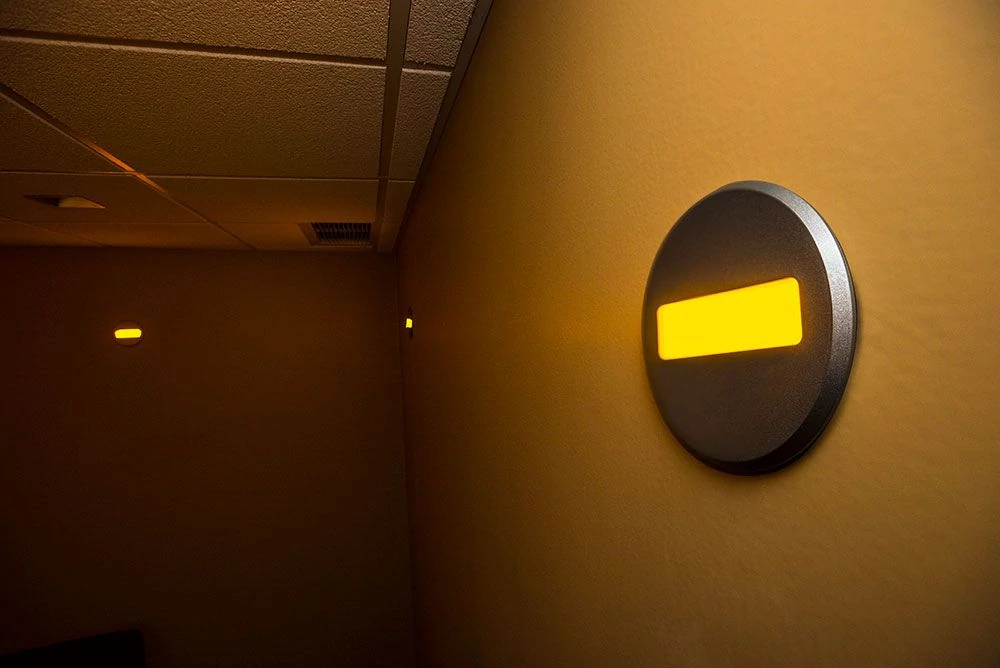
What are the motivations for designing with OLED lighting? To answer this question, first ask “what is OLED lighting to you?”. Is it simply light ambiance? Branding? Communication device? Healing element? Plant catalyst? Sleep modifier? Task lighting?
Working with architects, designers, luminaire manufacturers, automotive customers, and a wide array of specialty product innovators I see the “why OLED?” from many perspectives. Motivations for incorporating OLED vary with industry and designers. Different benefits will be the reason for utilizing OLEDs in different applications. However, the common thread is that OLED provides a unique advantage in the design solution.
Here are three applications where OLED light lends itself well and is arguably the better light source solution based on varying benefits.
1 – Museums
Why OLED: Cool-to-the-touch; No UV; Uniformity and color consistency; Naturally diffuse; 90+ CRI; Ultra-thin
“Lighting is an integral part of the storytelling process of museums”
Museums offer an immersive experience, where one can escape into the world of the arts, pursue scientific knowledge or relive history through the voices and relics of those that came before us.
The illumination source must be carefully selected, bearing in mind two key requirements; ensuring the light does not harm museum objects and the ambiance and flow of the exhibitions. Brightness levels and distribution of the light are also important to consider, as some fixtures are designed to illuminate multiple displays at once, meaning the light source must be bright enough to light the entire space, while preventing glare as the observer moves through. Accurate rendering of both color and material texture, revealing details of objects, is also important.
OLED lighting has been used in several museum installations because of its unique features. Museum curators specify OLED because it provides artifact protection and assures integrity of the exhibit. The low heat output and UV-free characteristics of OLED enable the light to be placed close to the pieces without [wearing down the fibers or losing color over time]. Also, because OLED is a naturally diffuse light source at 90+ CRI, the piece is represented in the best light, without harsh shadows and in true color. For many installations, the ability to hide the slim-profile OLED into display cases and shelving offers glare free, speckle free light with demanding space constraints.
2 – Machine Vision
Why OLED: Unmatched uniformity; cool-to-the-touch; Naturally diffuse; 90+ CRI; Ultra-thin
“The most sophisticated automated inspection system in the world cannot work without the proper lighting” – John Lewis
Quality Magazine, “How to Choose the Right Lighting for Machine Vision Applications”
Machine vision systems are essential for quality control in manufacturing and diagnostic processes. Machine vision images an object to make a determination about that object and lighting is a critical element in the system. The object image is realized through color rendering, surface characteristics and contrast.
“The way the light strikes the target, the wavelength of the light and the nature of the sample surface all influence the image produced at the camera. The direction of light allows different features to be highlighted while the use of a light of particular wavelength can have a major influence on the contrast in the image. In addition, the surface of the object affects the image, with shiny surfaces in particular giving rise to multiple reflections”.
Quality Magazine, “The Importance of Consistent Illumination in Machine Vision”
CCS, a global leader in machine vision lighting systems, has shown Organic LED solutions in both white and red that are capable of very high brightness with excellent uniformity and low heat. OLEDs maintain superb uniformity and excellent color consistency even at high intensity, high frequency pulse rates. OLED lighting systems provide advantages in configurations where space is at a premium and light needs to be near the object due to their thin profile and cool-to-the-touch quality.

CCS was bestowed a Vision Systems Design’s Innovator Gold Award at Automate Show 2019 in Chicago this past April
3 – Healthcare
Why OLED: Spectral control; low glare; cool-to-the-touch; excellent color rendering
Light – it impacts your well-being. It can be a positive factor, even a healing element, or it can negatively affect your health. From mood to memory, alertness to sleep, calm to anxious and productive to fatigue, lighting is a major influence.
“For optimal health and well-being in interior architecture, it is important for designers to consider indoor lighting as environmental illumination with wavelength, intensity and color temperature that takes the intended occupant ’s biological rhythms, age and special needs into consideration.”
The Human Eye: A Window to Health and Well-Being by Eugenia Victoria Ellis, PhD and Donald L. McEachron, PhD
With our 21st century behaviors – yes, our predilection to using cell phones and digital screens – a fundamental challenge is the increase in blue wavelengths in evening hours. Blue light interferes with our natural circadian rhythms, not only preventing a healthy sleep cycle but inhibiting functions that combat cancers, diabetes and cardiovascular disease.
OLED amber has no blue component and is excellent for night time circadian rhythm management and sleeping patterns. Several studies have shown that pure amber, without blue, can reduce anxiety in patients and the elderly.
For example, at a healthcare center in New York, a study exploring sleeping disorders in the elderly by eliminating blue light content in the evening. White lights were covered with filters to remove the blue wavelengths, producing red-amber output (550nm – 640nm). Results included a marked reduction in anxiety and restlessness as well as a stabilization of systolic and diastolic blood pressure (Kimberly Mercer, Maximizing Health and Sleep in the Elderly. LD+A Oct 2012, p 42) Since OLEDs do not rely on phosphor conversion from blue light, the predominant mode for LED, the amber achieves the goals of the study without any filters or wasted energy.
Polyphotonix in the UK has been evaluating OLED-based sleep goggles for treatment of diabetic retinopathy. Their work includes dialing in the specific wavelength needed to treat the disease while simultaneously supporting normal sleep pattern, providing a lightweight (as enabled by ultrathin OLED without need for heatsinks) and comfortable solution, and maintaining uniform and controlled light dosage. These attributes are uniquely OLED. Note that the green wavelength of interest is delivered without any blue content to disrupt sleep health. Clinical trials are on-going and have been supported by UK National Institute for Health Research.
The importance of spectral control is also a factor in white light for health care. In particular, color rendering is an important part of the patient assessment – the blue lips on a newborn with heart defect, the red lines of sepsis on an infected patient. OLEDs are broad, full spectrum light emitters which faithfully render color.
Lighting is such a fundamental component of how we experience the world. Curators, production specialists, health care providers are solving illumination challenges through the unique value of OLED lighting.




